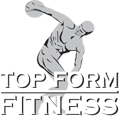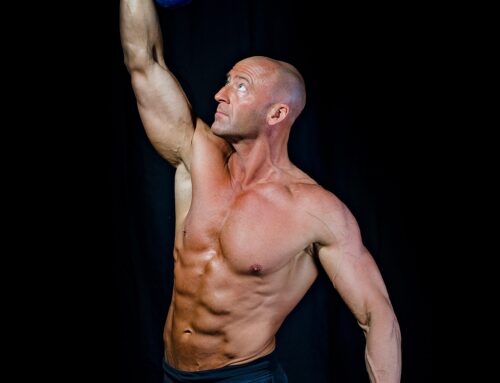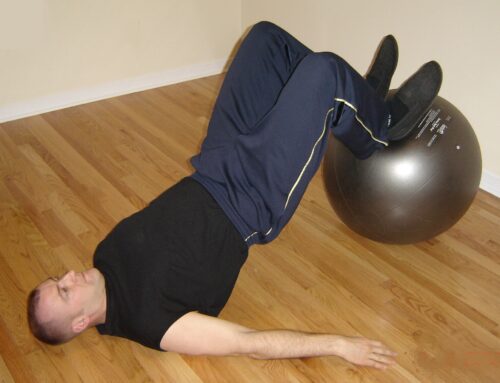By Jenny Yuen ,Toronto Sun
First posted: Sunday, January 01, 2012 05:09 PM EST | Updated: Sunday, January 01, 2012 07:42 PM EST
Costa Warwar extends his arms forward and picks up the rope.
He grits his teeth and strains his face as he drags 31.8 kilograms of weights across the span of the gym, not once or twice, but four times.
The Toronto chef came to Fusion Fitness several months ago to deal with a weight issue. He found that he was constantly tasting different dishes at work and that often translated to packing on extra pounds.
“I fell off the wagon a few years ago,” he said. “I had my first baby and I got busy with my own business and didn’t have time to catch up with my own health. I thought, if I want to be there for my daughter, then I have to get into shape.”
Twice a week, the 40-year-old meets with certified personal trainer Josh Hewett at the Yonge St. gym for a gruelling hour-long workout session. They often switch up the weight training and cardio program to keep it fresh, and by the end of the session, Warwar is sweating buckets.
“I want to be able to move about without getting tired,” Warwar said. “I feel a lot of energy and better after the workout. I find that when I used to go to the gym by myself, I would injure myself, so having someone here helps and keeps you motivated.”
The new year prompts many couch potatoes to vow to get in shape after they realize those extra slices of turkey — and other holiday goodies — did a number on their waistlines.
In 2012, there are more ways than ever to get fit without getting bored. Fitness trends are getting more creative and the days of sleepwalking on a treadmill are over.
According to the American College of Sports Medicine (ACSM), turning to educated, certified and experienced fitness and strength training professionals for instruction will be among the most popular ways to get in shape in 2012.
“There are a lot of fitness fads and trends coming out each year,” said Hewett, who is also owner of Top Form Fitness. “You have to be really careful about what bandwagon you jump on. Typically, you can always fall back on science and what’s tried and true and proven to work. The fundamentals are always going to be more effective. It doesn’t have to be fancy to be effective.”
Hewett, who has been a fitness trainer for roughly 20 years, tells his clients to forget about quick fixes and to make for lifestyle and nutritional changes that slowly bring improvement.
“You also have to find that internal motivation,” he said. “For some people, that might be a longer life with their children, relationship, career or a family history of health issues — something that gives you a strong drive outside of wanting to lose a couple of pounds.”
Getting fit doesn’t necessarily mean an expensive gym membership, either. You can do a lot of exercises at home, just using your own body weight. Diet and sleep are also key parts to how your body reacts to the workout.
He recommends using basic pulling and pushing movements — squatting, lunging, bending and twisting with the upper body. Multi-joint exercises use several muscles together and burn a lot more calories.
“A lot of people think doing long-distance training and slow cardio is the mainstay of a fitness program but you can get a lot more done if you keep your workout shorter and add sprint intervals,” he said.
Hewett has heard every excuse for not working out, but the most common complaint is a lack of time. He asks people to jot down excuses and rebuttals to each one.
“There are effective ways to exercise effectively that take very little time,” Hewett said. “Fifteen to 20 minutes of high-intensity interval training can get you similar results as doing an hour of cardio without any of the negative side effects — including muscle wasting. How many of us have a favourite television show we watch for hours a week or how many hours a week do we spend on Facebook? If we’re willing to give something up, we can reach our goals.”
The ACSM report in December is intended to show a distinction between fads and trends and serves to educate consumers about fitness trends.
“There are growing concerns about the still sluggish economy and how people choose to spend their hard-earned income,” according to Walter Thompson, the author of the study. “The results of this annual survey will help the health and fitness industry make some very important investment decisions when planning for the future. Those business decisions should be based upon emerging trends and not the latest exercise innovation peddled by late night television infomercials or the hottest celebrity endorsing a product.”
According to a Statistics Canada report last March, almost one-quarter of Canadians are obese.
From 2007 to 2009, about 24.1% of Canadians over the age of 30 were obese, according to the data. During the same period in the U.S., about 34.4% of American adults were classified as obese.
Obesity has been linked to hypertension, diabetes, cardiovascular disease and some forms of cancer.
The prevalence of obesity among Canadians has been on the rise for the past 20 years, according to Statistics Canada. The increase was highest among women in the 20-39 age group and in men between the ages of 60-74.
This could be why more older adults are joining fitness programs specialized for seniors. More retirees are wishing to stay active, explained Vintage Fitness owner Erin Billowits.
“Ten years ago when people thought of seniors fitness programs, they thought of gentle and seated work and now, there’s more strength-training for older adults and more different levels. You have the boomers that train for a triathlon and then there are older, frail adults.”
For those who want alternative ways to work out, yoga is still very popular. However, Zumba — improvised Latin dance with a cardio kick — has recently taken off in the GTA. The Chinese community in Markham has taken a big shine to it.
“Zumba will get them moving a little more and improve their health. The best thing with Zumba is you don’t have to memorize your steps. People don’t like the treadmill, but they still want to get fit,” said Ronald Ko, who along with his wife Lily, opened Zumba Ko over a year ago.
“One of our students is a nurse and she loves the feeling of endorphins after the class,” Ko, 39, said. “It makes you feel good and energized. My wife is pregnant and had two weeks off for Christmas and didn’t do classes. She said she’s never felt more pregnant in her life.”
Researchers from the ACSM are waiting to see if Zumba, which ranked ninth of this year’s list, will follow pilates’ short life in the top 20 fitness trends. For three years beginning in 2008, pilates made the top 10 but dropped off in 2011.
Hewett said while most fitness fads have some purpose to them, the problem arises when too much is mixed at the same time.
“Yoga has a point to it — it helps with relaxation and lower blood pressure and improve flexibility,” he said. “But when you start to combine yoga with pilates and yoga-boxing, that’s when it loses what it originally was. Everyone is doing stability training on wobbly balls and whoopee cushions and they figure the less stable they are, the more they’ll get. It will reduce the intensity of your workout if you’re on unsteady surfaces.”
His last piece of advice: Set reachable goals.
“Start with small goals and when you reach them and see success, that’s going to be what motivates you to bigger goals,” he said. “If you take action, you’re going to get results.”







I have some personal fietnss equipment at home and use it fairly regularly.My favourite piece of equipment is my boxing gloves and focus pads. Boxing really is a great way to work out and can really get the heart going.There are many other inexpensive ways to work out at home like push-ups, sit-ups, running, and skipping for example.The biggest thing with either working out at home or in a gym, is motivation and discipline to stick to a routine.